The picture “Before the exam” depicts young dancers, who are emotionally excited by the excitement associated with the forthcoming, landmark performance for them. Here, Degas did not set the task
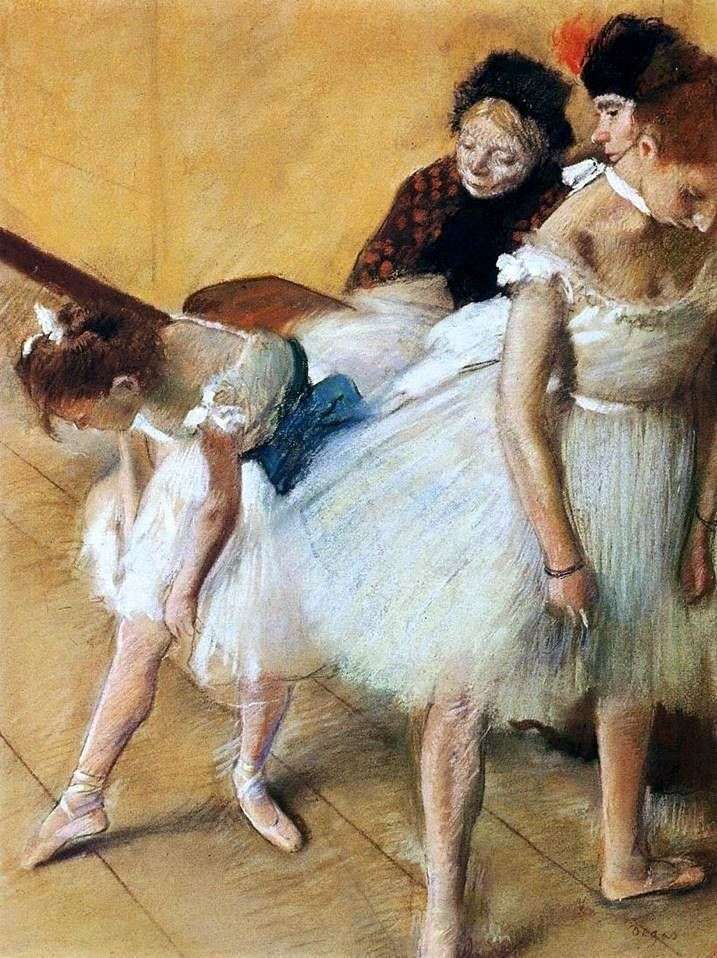
Degas Edgar

The picture “Before the exam” depicts young dancers, who are emotionally excited by the excitement associated with the forthcoming, landmark performance for them. Here, Degas did not set the task
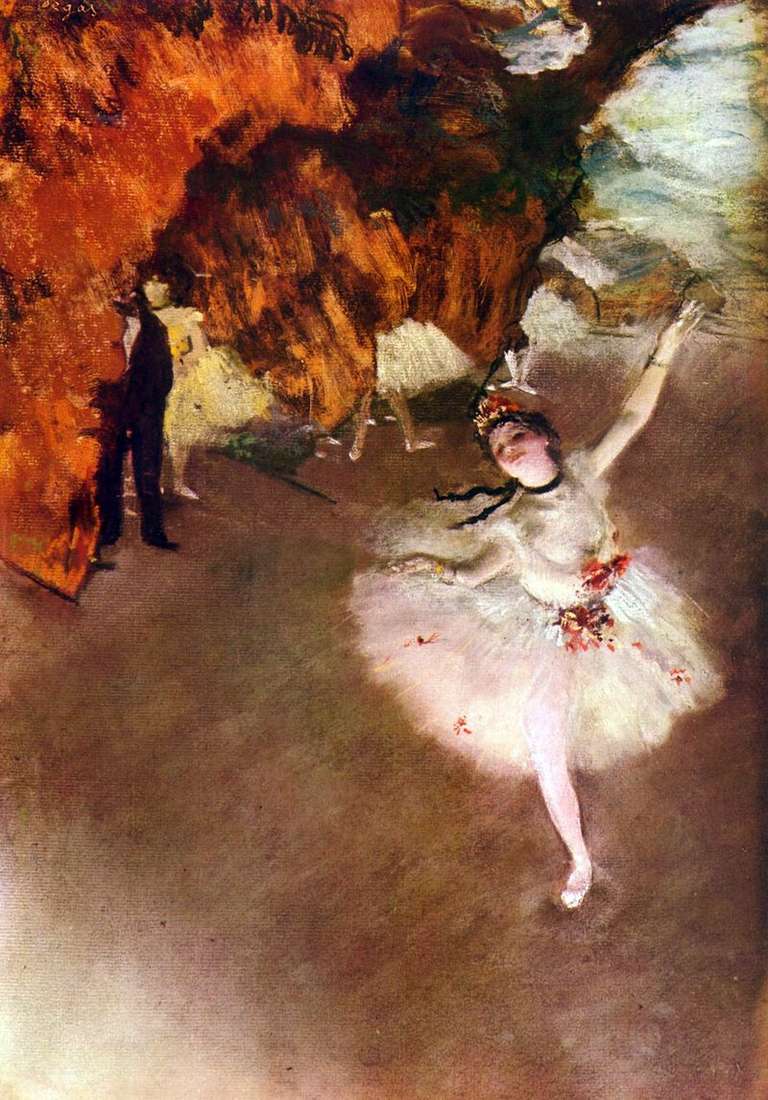
Degas is known for works depicting dancers, in particular ballet dancers. While most of them focus on rehearsals and preparing for the performance, this work shows a lone ballerina on
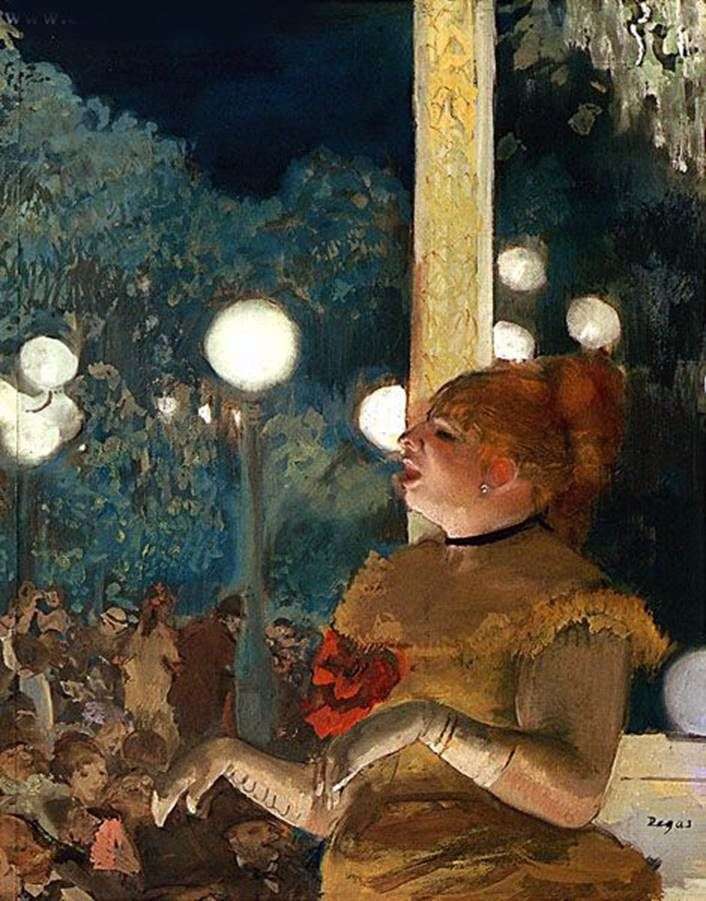
“The most accurate testimony of the cafe is in the hands of an aristocrat and the regular elegant parlor of the Montceau Park, Edgars Degas, ahead of Toulouse-Lautrec for a
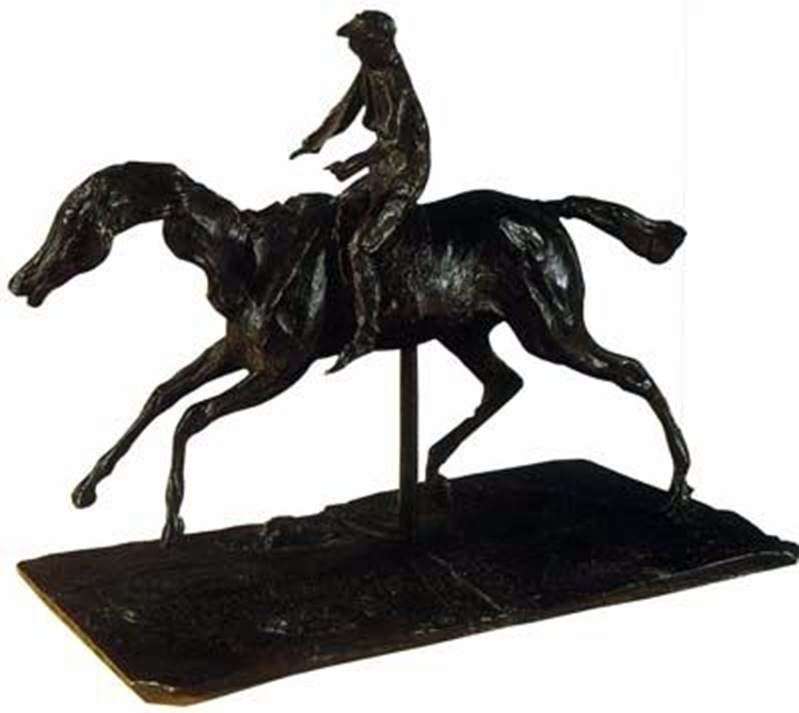
To sculpt small wax sculptures Degas began in the late 1860’s, and, as his vision deteriorated, the artist paid more and more attention to this genre. The themes of the
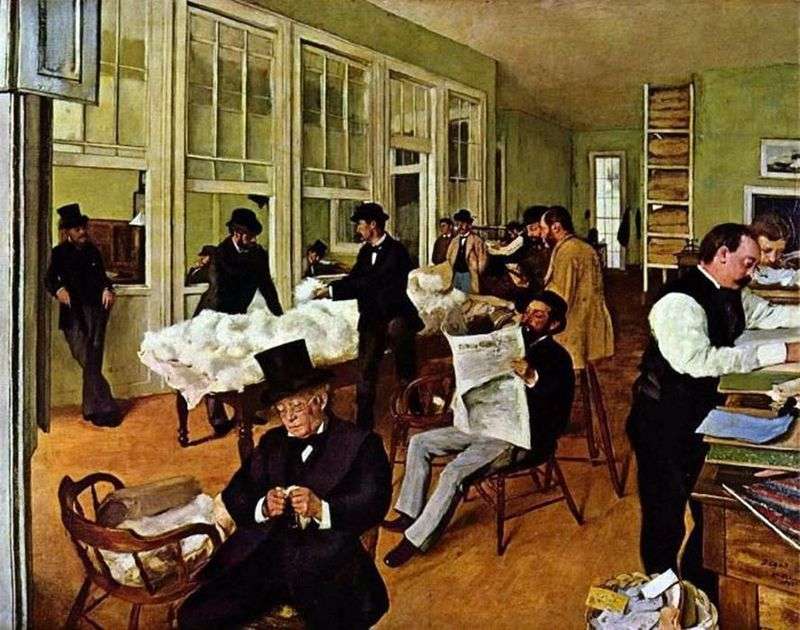
This picture Degas wrote during a trip to his relatives in New Orleans. The plot chosen by him for his canvas – a business office – before all the artists
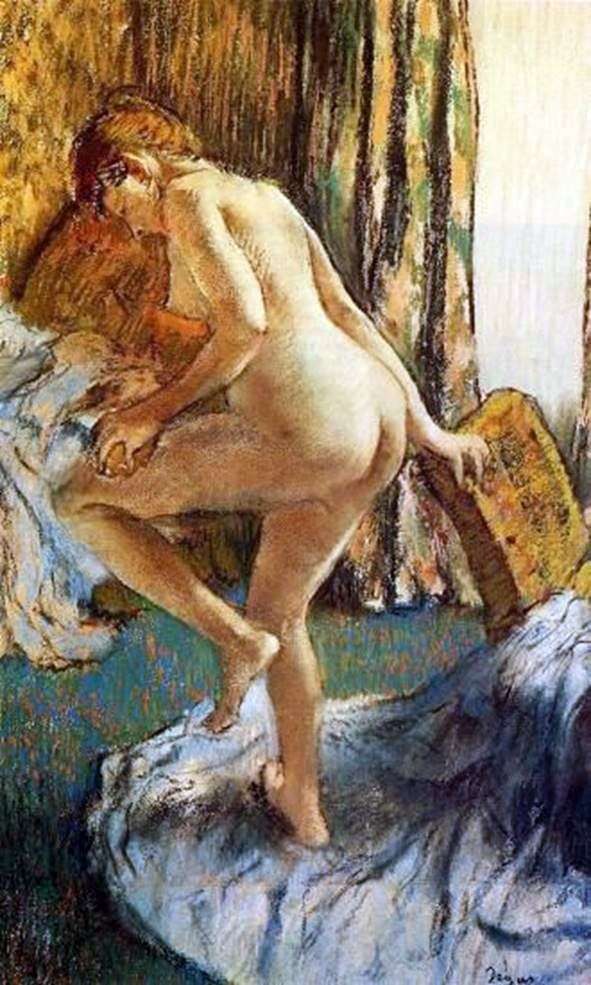
The work of Edgar Degas “After bathing” was written by the author at the age when a man can no longer be tempted or surprised. The artist’s experience explains the
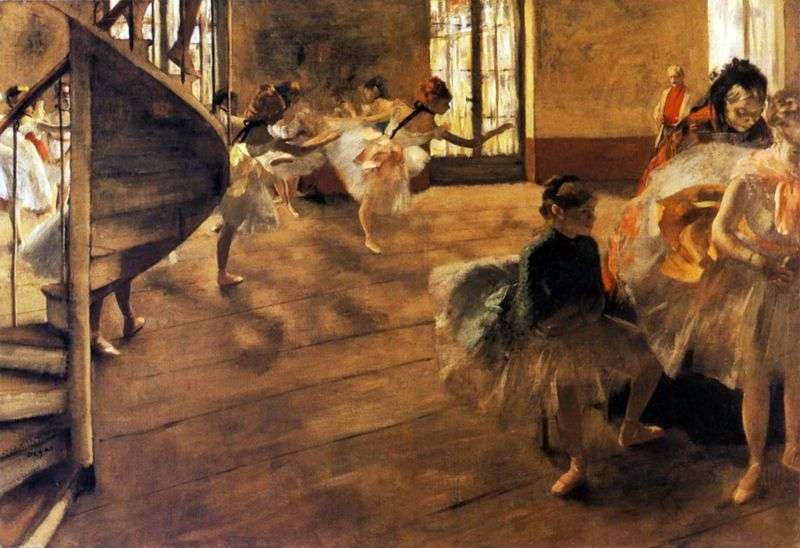
“They call me a painter of dancers,” Degas wrote. He really turned to this topic, and his early masterpiece “Rehearsal” allows you to appreciate all the uniqueness of the images
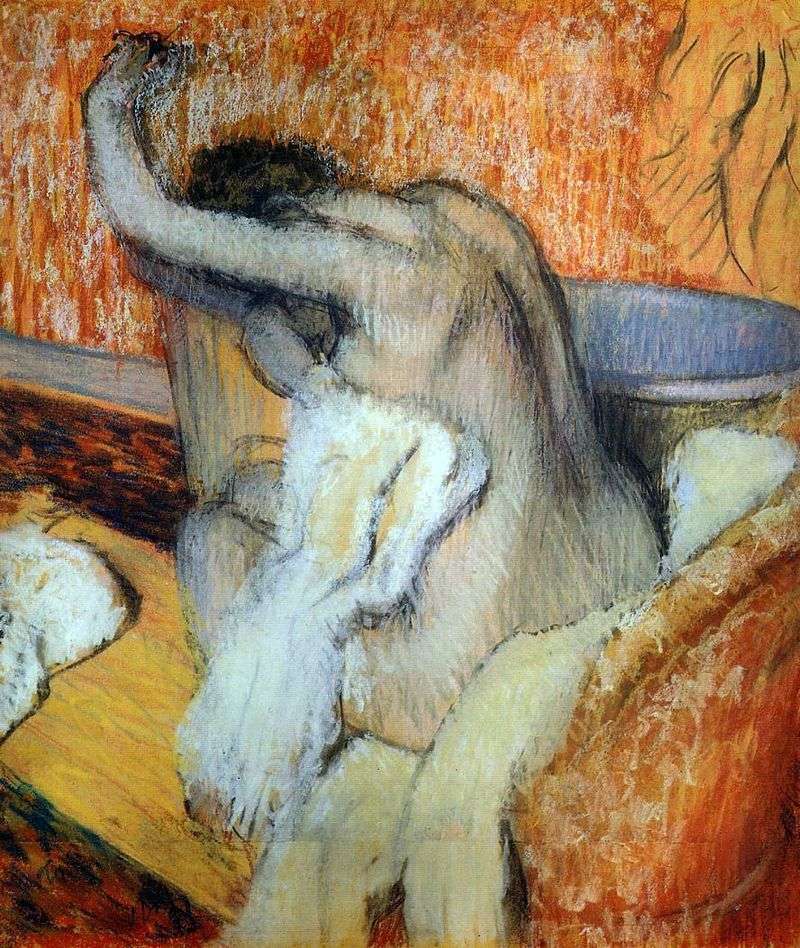
Edgar Degas Woman wiping herself with a towel, painting description The painting “Woman wiping herself with a towel” belongs to Impressionist Edgar Degas. It is made in a rare technique
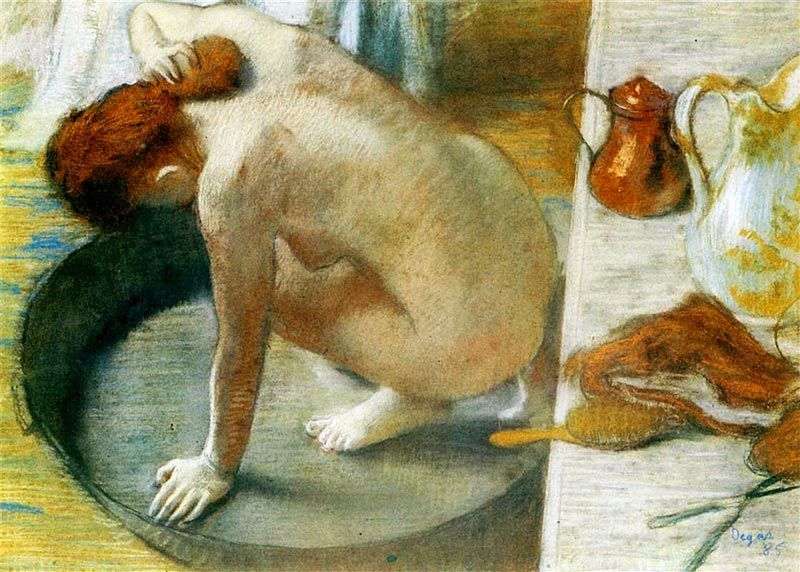
The nude body became more often depicted Degas with the advent of the 1880s. The pastel “Taz” was written in 1886, and it depicts a girl who seemed not at
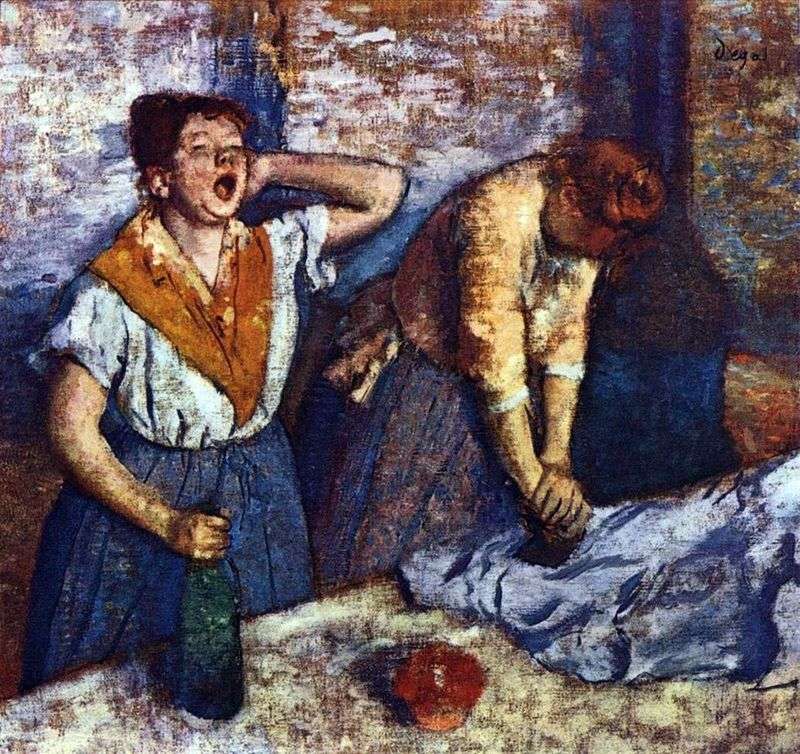
Edgar Degas, like Claude Monet, is considered one of the founders of Impressionism. His life was not easy, but out of all difficult life situations he went out with honor.
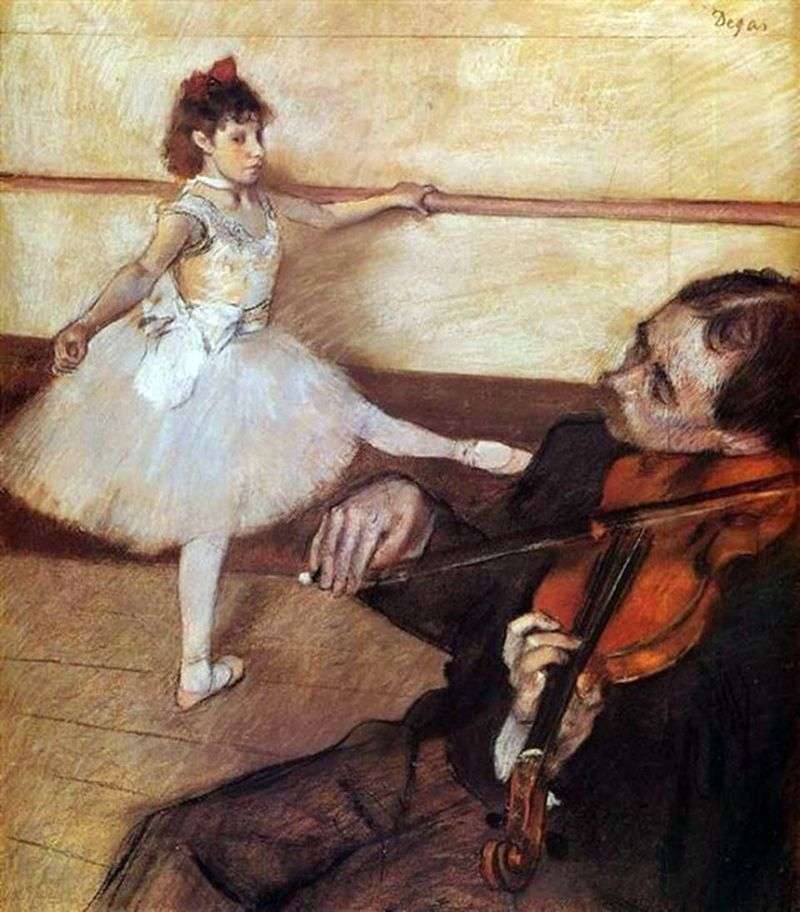
Grace, beauty and refinement – that’s what’s in all the pictures of Edgar Degas, dedicated to ballet. Master of painting wrote dancers in different techniques, and everything is clear –
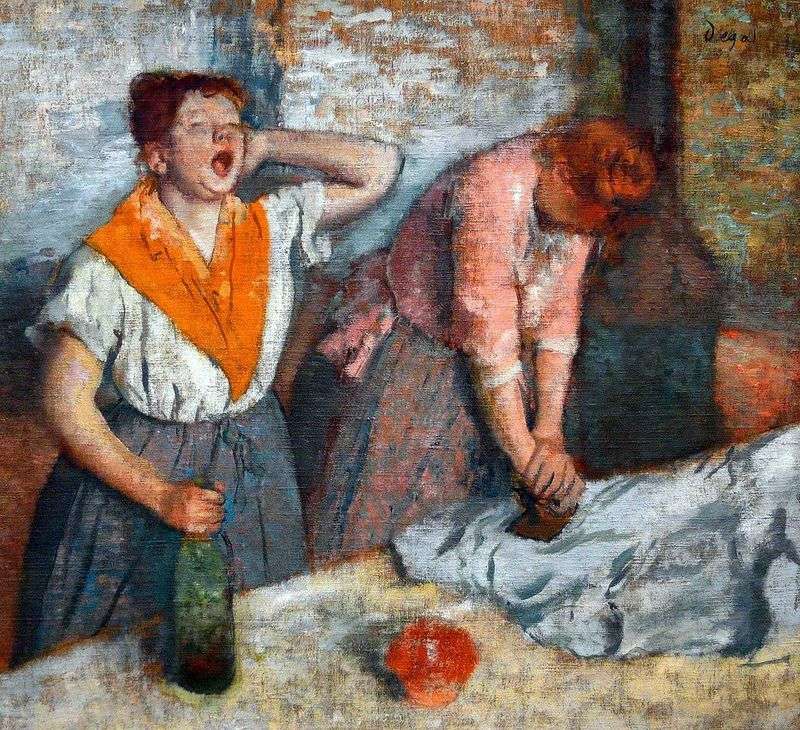
In the work of Degas there was no concept of the superiority of any social groups or strata over others, or of any parallel that compared people of gross physical
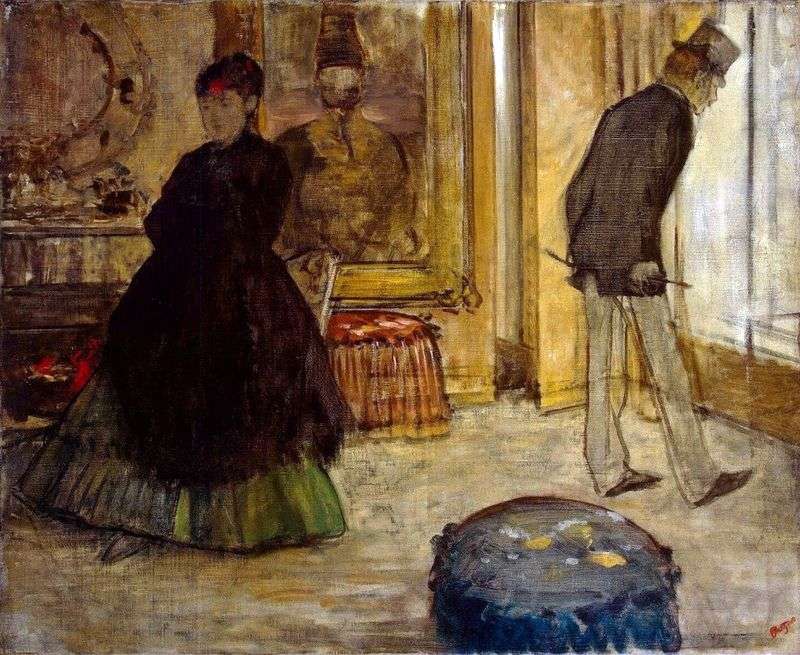
On closer examination of the picture, Burns’ idea of a hat workshop disappears, not only because no hats or boxes for them are visible anywhere. It’s probably the boudoir of
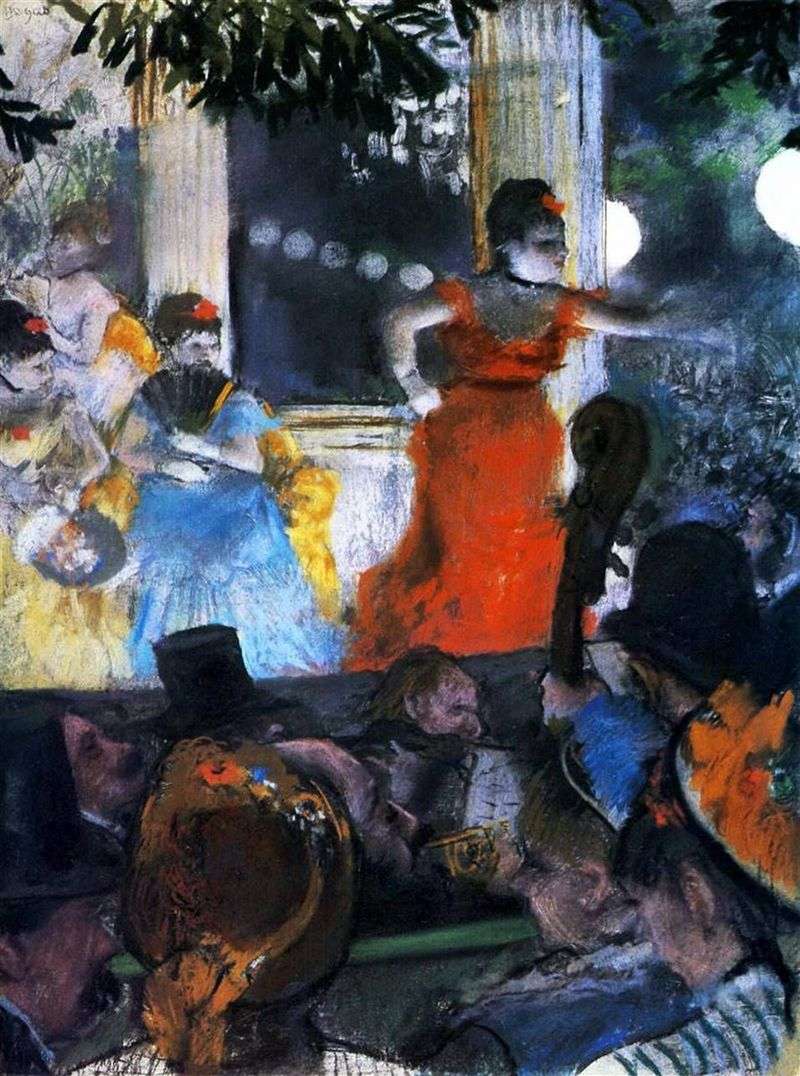
Only the true talent, polished his skill with hard work, is subject to the task through painting, to convey the character of man. Degas, solved a more difficult task, in
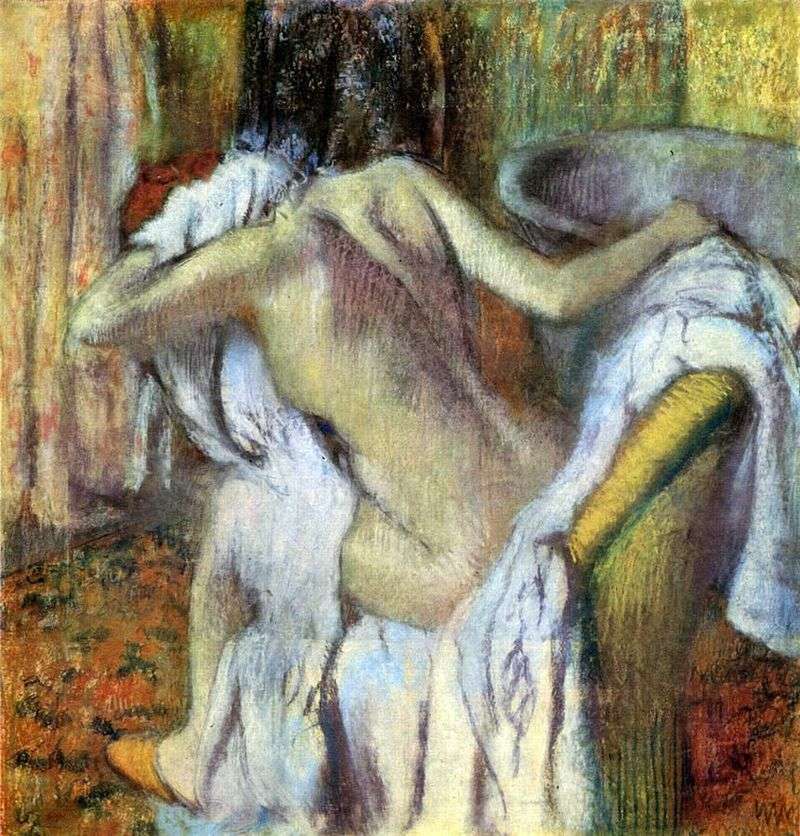
The work belongs to a well-known series of works depicting naked women during bathing, combing, etc. in which, often, the heroines are in uncomfortable poses. The reaction to the series
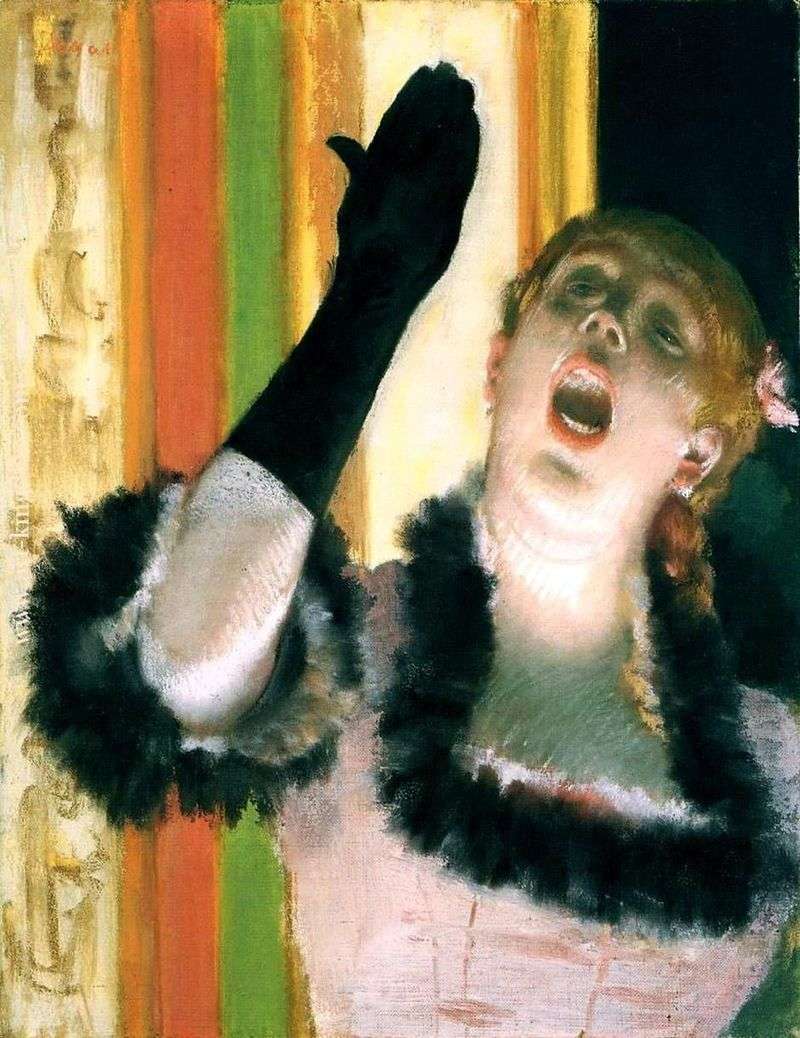
A popular painting from the series related to the cafes is the work “Singer from the cafeteria”. Degas attracted the cafes, with their democratic spirit, and even some vulgarity, especially
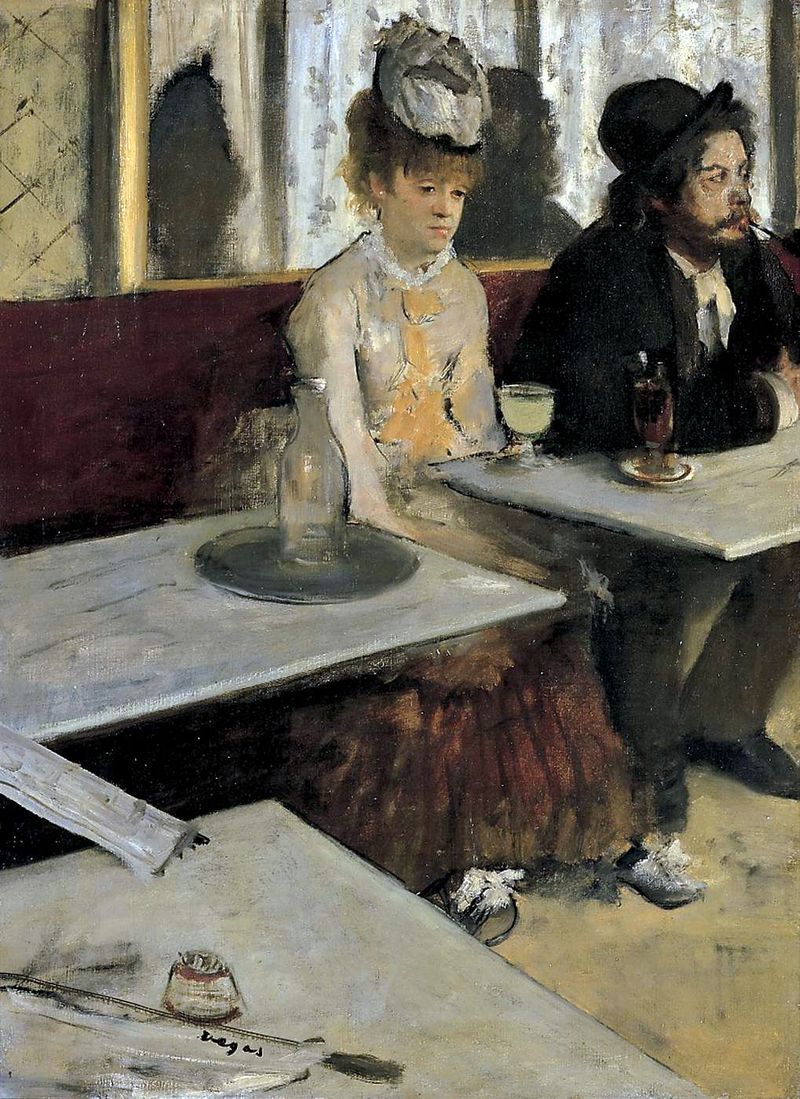
The picture has changed its name more than once. Originally it was called “Sketch of a French cafe”, then – “People in a cafe” and only in 1893 it became
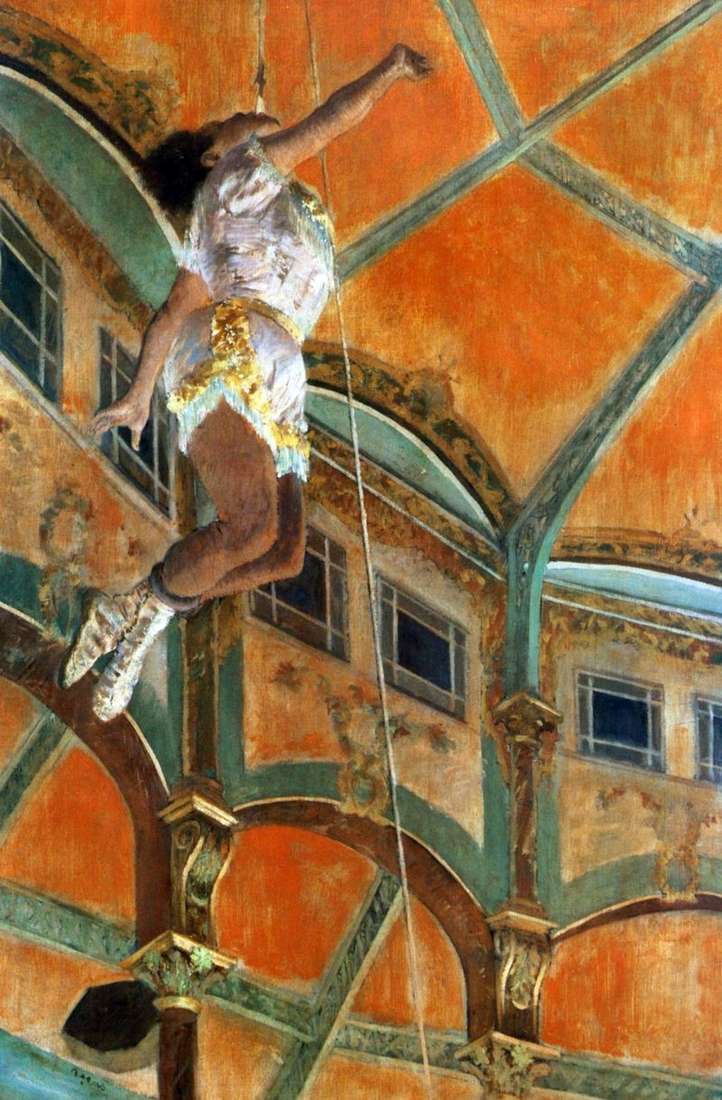
In 1873 the circus of Fernando began to work in the French capital and almost immediately became one of the most attractive and favorite places for leisure. Speeches circus attracted
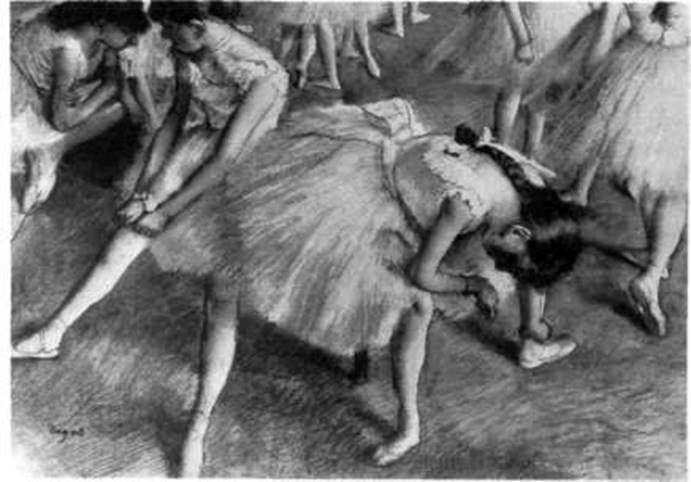
In his sketch “Waiting to enter the stage”, made by pastel, Degas portrayed the dancers at the moment when the curtain is about to open. The compositional construction of the
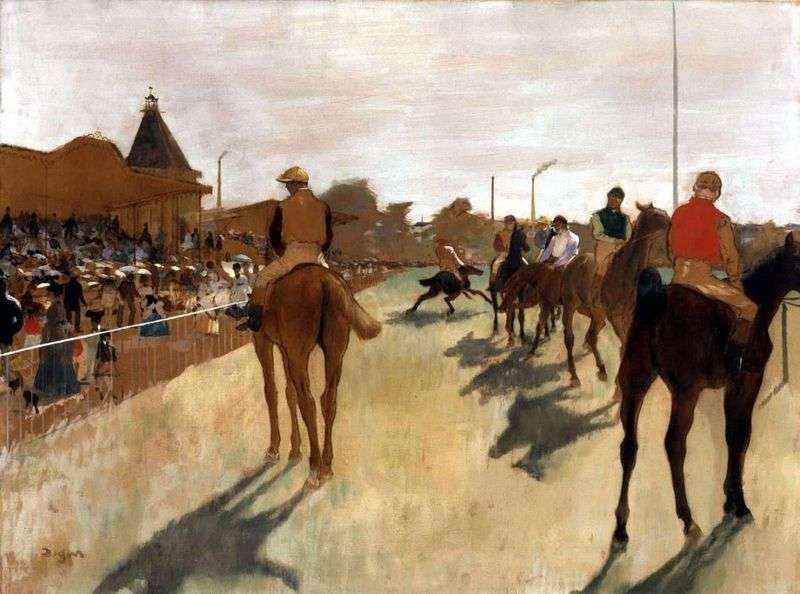
The goal pursued by Degas when writing the work “Jockeys in front of the stands” is to convey the moment that precedes the beginning of the races, when the excitement
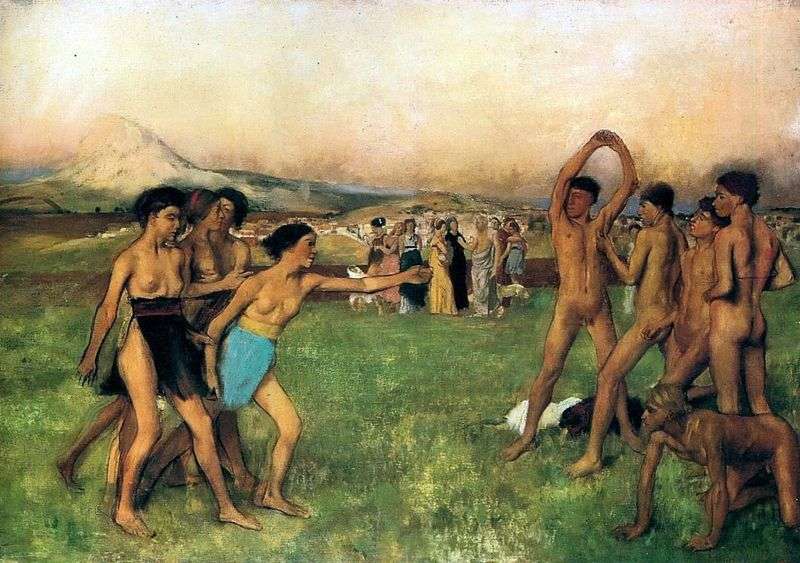
After returning to Paris in 1859, Degas turns to historical themes, and one of the works of this series is the picture “Young Spartans, causing a contest of Spartans.” Despite